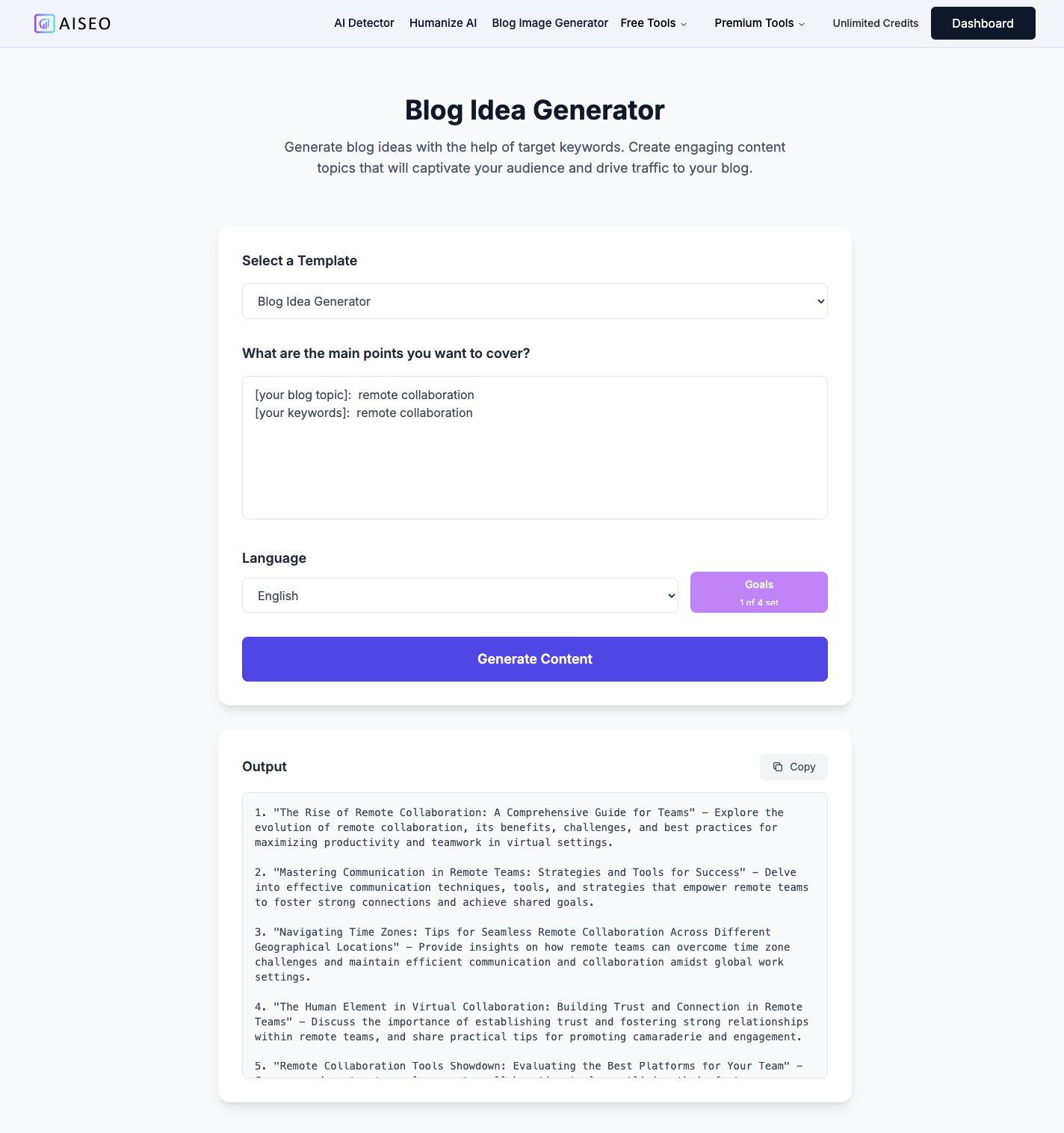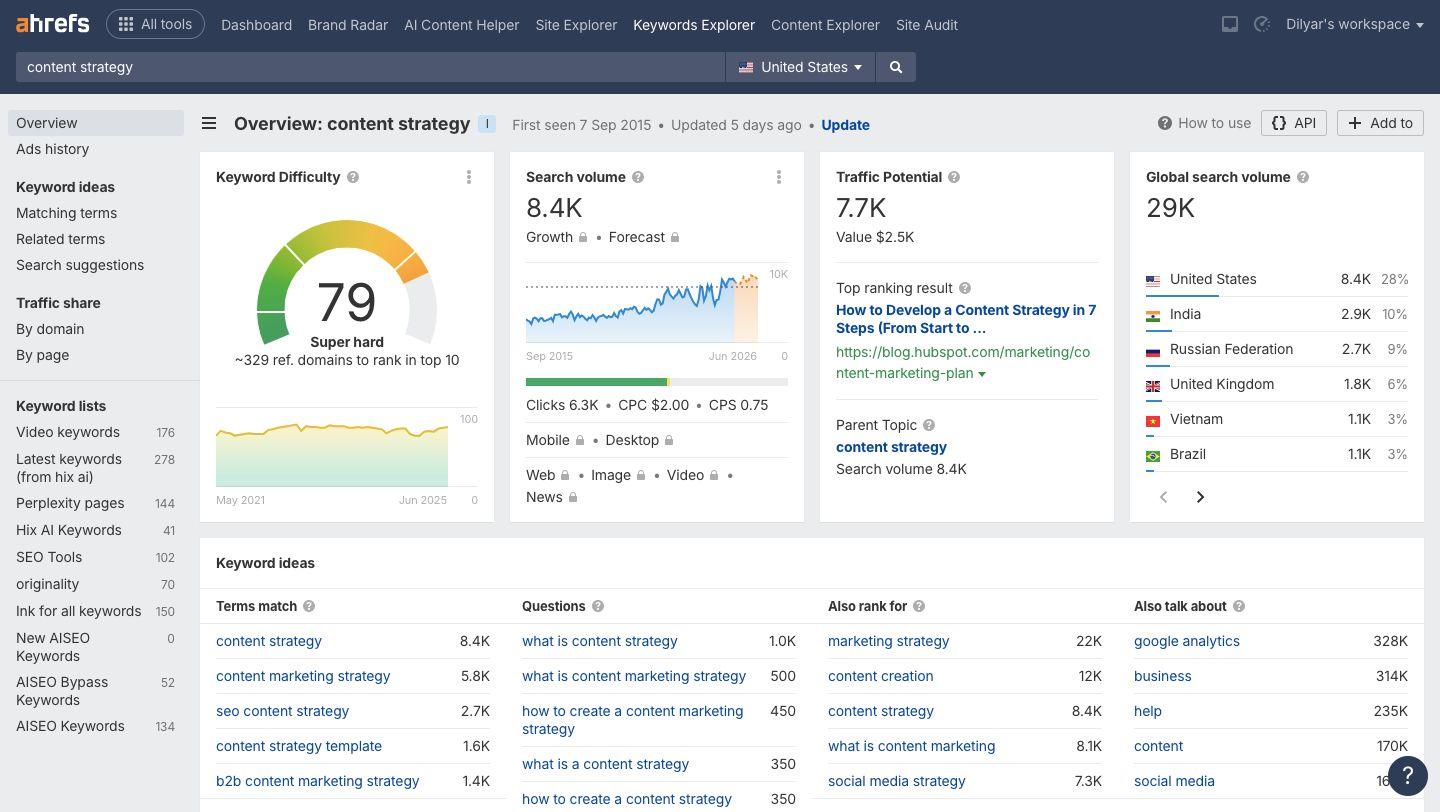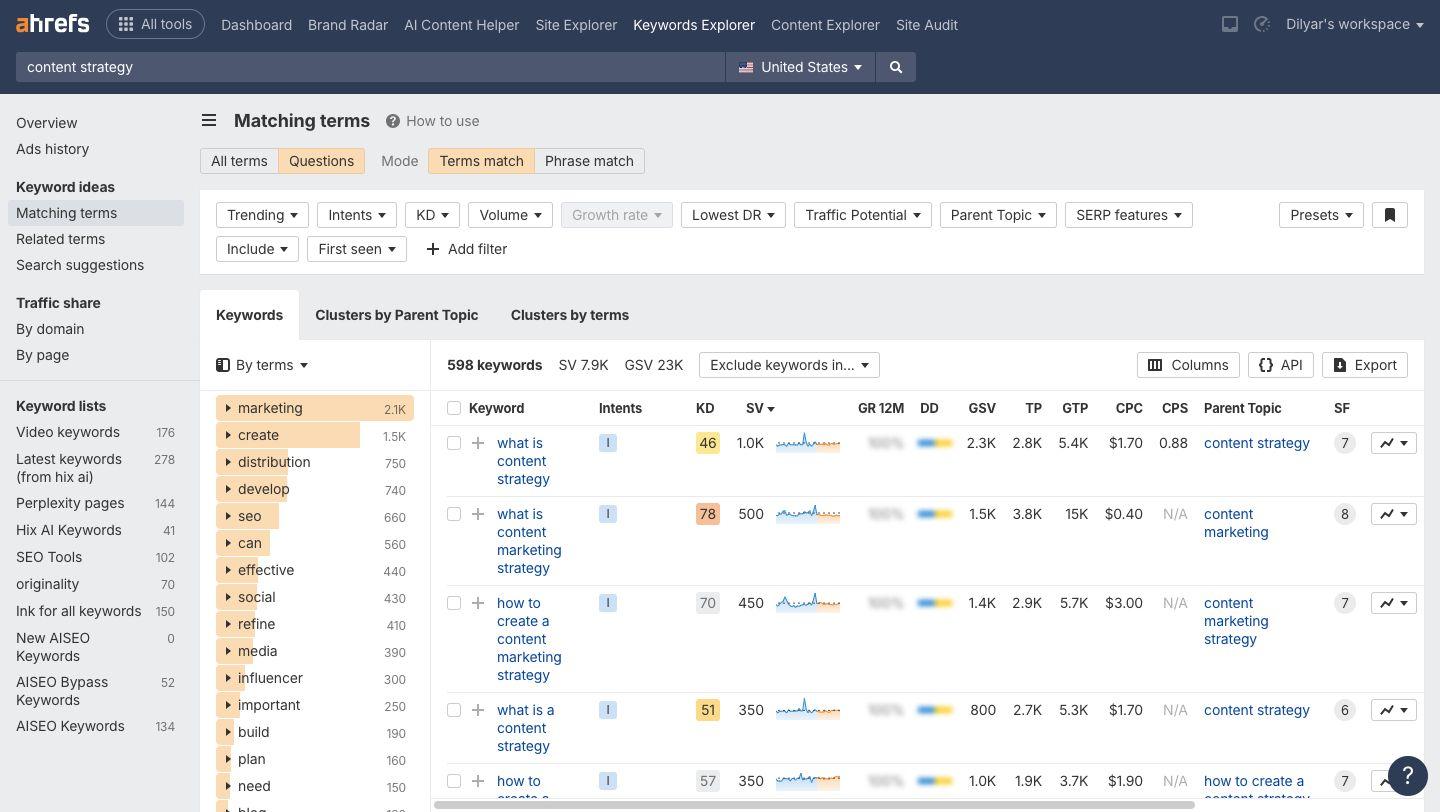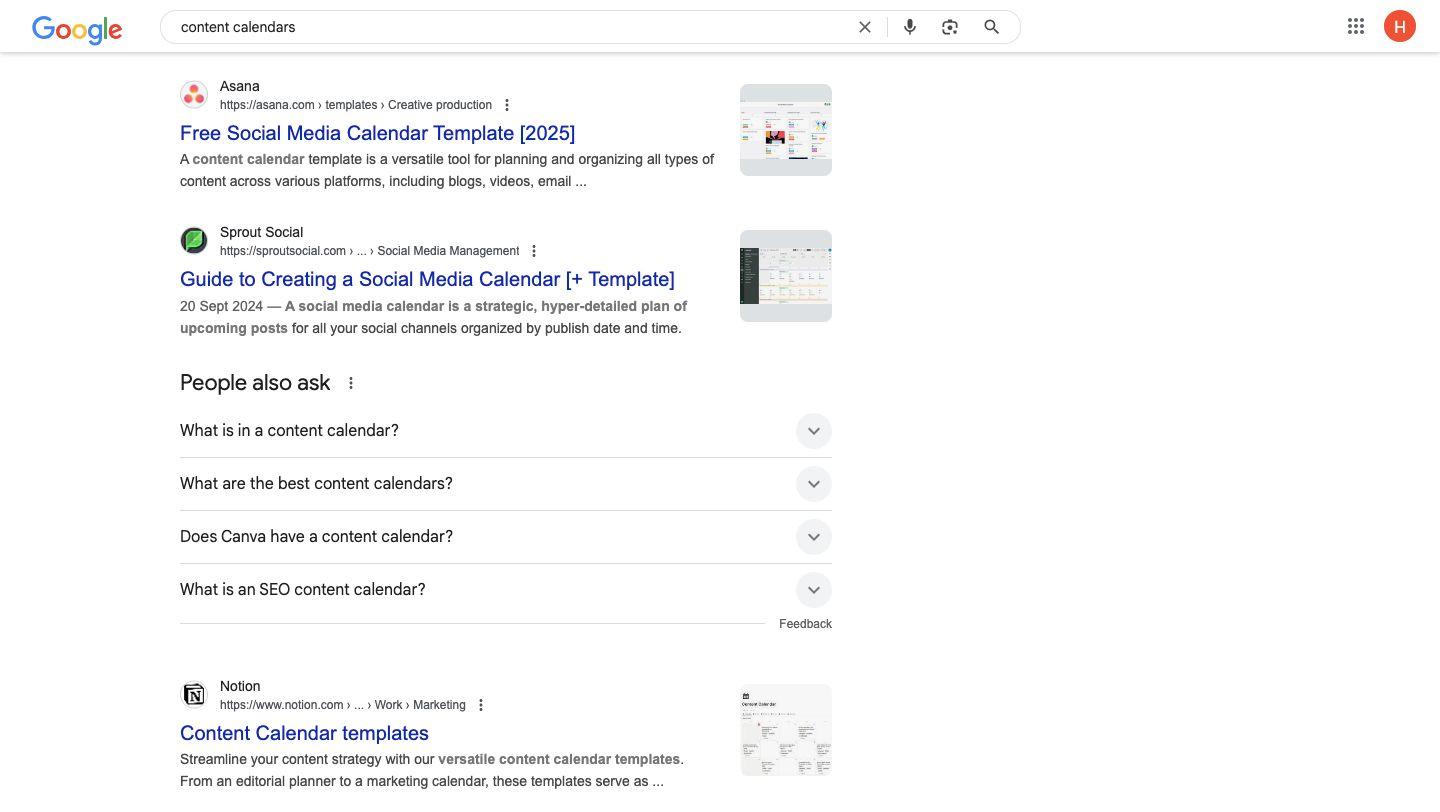Coming up with blog ideas can feel harder than writing the blog itself.
When deadlines are looming and the content calendar is looking empty, figuring out what to write next can become a creative bottleneck.
In fact, 16% of marketers say finding new content ideas is one of their biggest challenges, according to HubSpot’s 2023 State of Marketing Report. But with the right systems in place, you can generate relevant, valuable ideas without relying on bursts of inspiration.
In this blog, you will learn:
- How to use tools and trends to spark blog content ideas quickly
- Where to find untapped blog topic ideas from your existing audience
- A simple framework to build great blog post ideas at scale
Let’s explore how to create blog ideas fast, without burning out or relying on luck.
How to Build a Fast Blog Idea System That Actually Works?
Before jumping into individual tactics, it helps to think of your blog ideation process as a system. Instead of waiting for inspiration to strike, you can follow a structured approach that reliably surfaces valuable ideas—again and again.
Here’s a step-by-step framework you can follow to build blog topic ideas quickly and consistently:
1. Start With a Reliable AI Content Idea Generator
One of the fastest ways to generate blog ideas is by using an AI content idea generator. These tools take a keyword or broad topic and quickly return multiple, structured suggestions, often shaped around common search trends and reader intent.
Instead of starting from scratch, you begin with prompts that reflect what people are already searching for. A well-built generator can help surface angles you hadn’t considered—like mistakes, how-tos, comparisons, or niche use cases—making it easier to align your content with search demand.

For example, tools like AISEO Blog Idea Generator offer keyword-based prompts in seconds. Type in a topic like “remote collaboration,” and you might get ideas such as:
- “The Rise of Remote Collaboration: A Comprehensive Guide for Teams”
- “Remote Collaboration Tools Showdown: Evaluating the Best Platforms for Your Team”
- “The Pros and Cons of Async Work: What the Data Says”
The goal isn’t to copy outputs word-for-word, but to use them as structured inspiration, sparks that reduce the cognitive load of ideation and help you move quickly into outlining or researching a topic.
When used well, AI tools can supplement your content planning process without replacing your voice or strategy. For example, pairing an AI avatar generator with your blog posts can help transform written content into engaging visual explainers, opening up new formats for your ideas.
2. Analyze Existing Blog Content for Expansion Opportunities
One of the most overlooked sources of blog content ideas is your existing library. If you’ve already published a decent number of blogs, you’re likely sitting on a goldmine of untapped ideas.
Start with your analytics and identify top-performing posts based on:
- High traffic
- Longer time on page
- Lower bounce rate
- Strong backlinks
- Comment activity
These metrics show what resonates most with your readers and where you might already have authority.
Now dig into those posts and ask:
- Are there subtopics you only touched briefly, like a single paragraph or a bullet point?
- Is there new data or research that could justify an updated, standalone version?
- Can you break the topic into a series, like a mini-guide or multi-part blog collection?
- Have readers asked questions in the comments or via email that point to gaps or confusion?
Let’s say you have a post called “A Beginner’s Guide to Email Marketing.” Inside that post, you might mention:
- Segmentation strategies: Can be expanded into “7 Segmentation Tactics That Increase Email Conversions”
- Welcome sequences: Could become “A/B Testing Your Welcome Emails: Real Examples and What Worked”
- Subject line writing: Maybe “The Science of Email Subject Lines: Insights from 50M+ Emails”
You can also add depth by format:
- Turn a tip into a data-driven case study using your own metrics or examples from the industry.
- Add frameworks or formulas like the AIDA model (Attention-Interest-Desire-Action) when explaining copywriting techniques.
- Include content upgrades like templates, checklists, or downloadable guides to further build engagement.
By expanding on what’s already working, you’re creating more relevant content and boosting your site’s topical authority, which is great for SEO and overall engagement.
Your audience probably doesn’t remember every post you’ve published. And new readers haven’t seen them at all. Repurposing is a smart, efficient way to stay consistent without starting over. Even top Webflow developers use this strategy to refresh existing content and keep their blogs SEO-optimized without constantly creating from scratch.
3. Use Audience Language From Comments and Emails
Comments on your posts, replies to newsletters, direct messages, support tickets, and discussions on your LinkedIn engagement communities can be goldmines for blog topic ideas. Look for patterns and repeated questions; these often point to content opportunities you can turn into full blog posts.
Start by collecting common questions, feedback, and recurring frustrations. If multiple readers ask, “How do I increase open rates without sounding spammy?”—that’s not just feedback, it’s a signal.
You could easily turn it into a blog titled:
- “How to Write High-Performing Emails Without Sounding Like a Marketer”
- “Why Your Emails Get Ignored (and How to Fix That Fast)”
- “The Psychology Behind Open Rates: What Readers Actually Respond To”
When your blog topics are based on real questions and concerns from your audience, you’re more likely to create content that matches what they’re searching for, boosting both engagement and visibility.
To keep this process manageable, set aside time weekly or monthly to review audience feedback and log potential blog topic ideas in a swipe file or tracker.
4. Tap Into Competitor Gaps and Keyword Trends
Studying what’s already working and what’s missing can lead you to blog topics with real potential.
Instead of guessing, you can use keyword trend data and competitor content gaps to find ideas your audience is already searching for but hasn’t been fully served.
Let’s break this into two parts.
Part 1: Use Keyword Trend Tools to Spot Emerging Topics
Start by identifying what your audience is searching for right now and how interest is evolving. Here's how:
Step 1: Choose a broad topic
Pick a topic relevant to your niche, like “content strategy” or “email marketing.”
Step 2: Use trend tools

Use tools like:
- Google Trends – to spot rising search interest over time.
- AnswerThePublic – to find popular questions people ask around a keyword.
- Ubersuggest or Ahrefs – for search volume, CPC, and keyword difficulty.
Step 3: Look for long-tail keywords

Instead of generic terms, go for specific searches like:
- “how to build a content calendar for solopreneurs”
- “best email open rate strategies 2025”
These longer, intent-driven keywords are often less competitive and more targeted.
Part 2: Analyze Competitor Gaps for Unique Angles
Now look at what your competitors are publishing and, more importantly, what they’re missing.
Step 1: Google your target keyword

Search your chosen topic and study the first page of results.
Analyse:
- What blog formats are being used repeatedly (listicles, how-tos, opinion pieces)?
- Which user groups are NOT being targeted (e.g., solo creators, small teams)?
- Are top posts outdated or missing depth?
Step 2: Use competitor tools
Use tools like:
- BuzzSumo – to find which competitor blogs have the most shares and engagement.
- Ahrefs or SEMrush – to view top-ranking keywords for competitor blogs and spot gaps they haven’t covered.
Step 3: Find content gaps you can own
If all top results for "content calendars" are aimed at large teams using enterprise tools, there's a clear opening to write:
“How Solo Creators Can Build an Efficient Content Calendar Without Fancy Tools”
That's a specific, underserved angle that speaks directly to a niche and stands out in search.
5. Keep a Swipe File for Ongoing Inspiration
The best blog ideas rarely show up when you’re sitting down to write; they tend to appear mid-scroll, during conversations, or while reading something unrelated. That’s why maintaining a swipe file is one of the most effective long-term strategies for consistent content creation.
A swipe file is simply a running list of potential blog ideas, headlines, phrases, or questions that catch your attention. You can store it in a Google Doc, spreadsheet, Notion board, or any tool you’ll actually use. The goal is to capture inspiration in real time, so you’re never starting from scratch when it’s time to publish.
Over time, your swipe file becomes a reliable idea bank. Even a quick scan through old notes can spark a new angle or unlock a blog idea you’d forgotten.
It’s not about having the perfect idea every time—it’s about always having something to build on.
6. Create a Content Pillar Strategy to Scale Efficiently
If you want a steady flow of blog post ideas without starting from scratch each time, a content pillar strategy is your best bet. It helps you organize your content around key themes, making it easier to plan, write, and grow your blog consistently.
Here’s how to build one:
Step 1: Identify 3–5 Pillar Topics
Start by choosing 3 to 5 broad topics that are central to your brand, audience interests, or expertise. These should be themes you can talk about often and in depth.
For example:
- A digital marketing agency might choose: SEO, email marketing, social media, and content strategy.
- A wellness brand might focus on: nutrition, mental health, fitness, and holistic living.
Step 2: Break Each Pillar Into Subtopics
Under each pillar, list out specific topics or questions your audience has. Think of common problems, FAQs, or how-to searches.
For instance, under Content Strategy, your subtopics might be:
- How to build an editorial calendar
- Tips for writing effective content briefs
- SEO content research tools
- Ways to repurpose long-form content into short posts
Each subtopic is a potential blog post.
Step 3: Expand Into Content Types
Once you have subtopics, think of different formats to cover them:
- How-to guides
- Case studies
- Listicles
- Comparison posts
- Beginner vs. advanced breakdowns
This gives you multiple angles for each topic and keeps your content fresh.
Step 4: Connect With Internal Links
As you create posts, link them back to their main pillar page (or vice versa). This creates a strong internal linking structure that helps users navigate your site and boosts your SEO.
For Example: A blog titled “How to Create a Content Brief” can link back to your main pillar post: “The Ultimate Guide to Content Strategy.”
Step 5: Organize in a Content Tracker
Use a simple spreadsheet or Notion board to keep track of each pillar, its subtopics, and published articles. This helps you stay consistent and avoid repeating ideas.
By following this step-by-step system, you build a scalable foundation for content that aligns with both your audience and search engine needs, without ever running out of blog ideas.
A Quick Note on Using Tools Strategically
Many of the techniques in this article can be done manually, but some teams streamline the process by using smart tools.
For example, AISEO Blog Idea Generator provides structured prompts based on a topic or keyword, which can serve as a starting point for brainstorming.
In fact, 43% of bloggers now use AI tools to come up with content ideas, according to Orbit Media’s 2024 Annual Blogger Survey. As AI becomes more embedded in content workflows, tools like this are helping reduce the time spent on brainstorming while surfacing ideas aligned with search behavior.
Rather than replacing editorial judgment, tools like these help surface new angles or formats that might otherwise be overlooked. They can support consistency and reduce friction in your ideation process when used alongside a solid content plan.
Final Thoughts
Learning how to create blog ideas doesn’t have to be a struggle—or a guessing game.
By using a mix of tools, analyzing existing content, and staying connected to your audience, you can build a system that consistently surfaces relevant and valuable topics.
Once you’ve built a solid list of blog ideas using these strategies, don’t stop there. The real impact comes from turning those ideas into detailed outlines and high-performing blog posts, which is where a structured writing system can save time and improve results.
You can check out our AISEO Article Generator to create SEO-optimized blogs that actually read 100% human and rank high.

About Dilyar Buzan
Founder & CEO at AISEO
Artificial Intelligence - University of Amsterdam
LLM engineer
